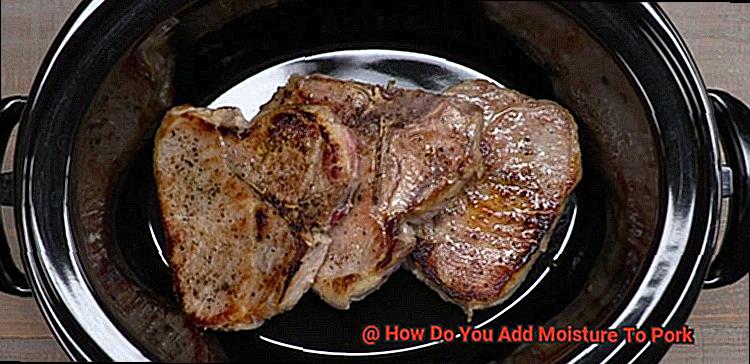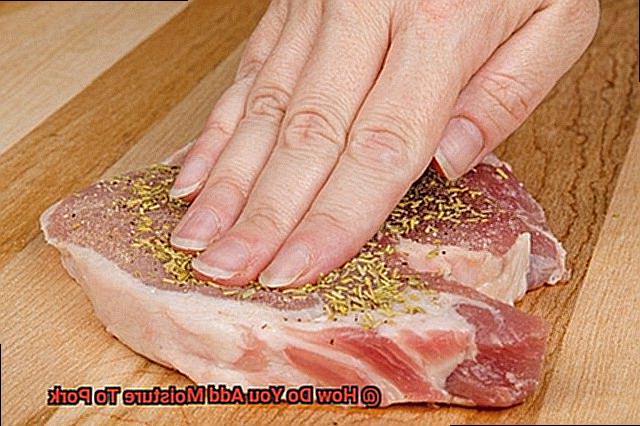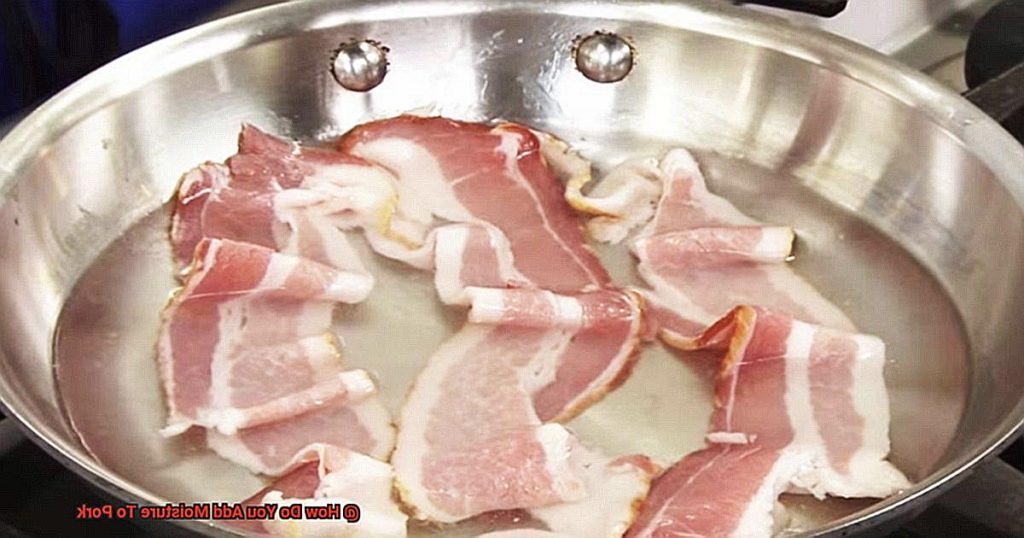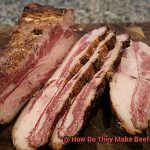Sick of dry, tasteless pork? Craving those lip-smacking, juicy bites that make your taste buds dance with joy? Well, get ready to turn things around because we’re about to spill the beans on how to add some serious moisture to your pork dishes.
Whether you’re a kitchen pro or a newbie just starting out, nailing the art of moist pork can level up your cooking game like never before. From fancy pork chops to slow-cooked pulled pork, we’ve got the essential techniques that will guarantee mouthwatering results every single time.
So, grab your trusty apron and join us on this flavor-packed adventure as we uncover the secrets behind perfectly moist pork. Get ready to unlock a world of tenderness and unforgettable flavor that will have everyone begging for seconds. Let’s dive in and discover how to take your pork from drab to fab.
Contents
What is Brining?
Here, we’ll reveal the secret to achieving pork perfection on your grill. Brace yourself for the transformative power of brining. Discover how this simple yet effective technique can turn your pork into a succulent and flavorful masterpiece.
What is Brining?
Brining is the process of immersing meat in a saltwater solution, also known as a brine, before cooking. This technique works wonders by boosting moisture content and infusing the meat with delectable flavors. The salt in the brine breaks down proteins in the pork, enabling it to retain more moisture during cooking.
The Brining Process:
To begin, gather water, salt, and optionally sugar or other seasonings. While the salt-to-water ratio may vary, a general guideline is 1 cup of salt per gallon of water. Dissolve the salt (and sugar, if desired) in the water to create a flavorful brine.
Next, fully submerge your pork cuts in the brine and refrigerate them for a specific period. The brining time depends on the size and thickness of the meat. As a rule of thumb, brine pork for approximately 1 hour per pound. Be cautious not to over-brine, as it can result in excessive saltiness.
Flavor Enhancements:
While salt is the primary seasoning used in brines, you can take flavor profiles to new heights by experimenting with additional ingredients. Consider adding herbs like rosemary or thyme, spices such as peppercorns or chili flakes, garlic cloves, or even citrus zest for a refreshing twist. These flavors permeate the meat during brining and intensify upon cooking, creating a symphony of taste.
Benefits of Brining:
Brining offers numerous benefits beyond moisture retention and flavor infusion. By brining your pork, you can tenderize tougher cuts, rendering them succulent and enjoyable. Additionally, brined pork is less prone to drying out on the grill, ensuring juicy results every time.
Grilling Tips:
Once your pork has finished brining, fire up the grill. Preheat to medium-high heat and oil the grates to prevent sticking. Remove the pork from the brine, pat it dry with paper towels, and let it come to room temperature before grilling.
Grill the pork over direct heat for a few minutes per side to achieve a flavorful crust. Then, move it to indirect heat and continue cooking until the internal temperature reaches your desired doneness, using a meat thermometer as your guide.
How Does Marinating Work?
Prepare to embark on a culinary adventure that will transform your pork into tender, juicy, and flavor-packed masterpieces. Marinating is more than just a seasoning technique; it’s a magical process that combines science and art to create culinary wonders.
At the heart of marinating lies the power of acid. That’s right – acid is the key to unlocking the potential of your meat. Whether it’s the tangy kick of vinegar, the bright zest of citrus juice, or the creamy richness of yogurt, these acidic liquids work their magic by breaking down the proteins in the meat. This process, known as denaturing, transforms tough cuts into melt-in-your-mouth indulgence. Say goodbye to chewy and hello to tender.
But marinating isn’t just about tenderizing; it’s also about infusing flavor. As your pork luxuriates in the marinade, it becomes a sponge, absorbing all the deliciousness from the liquid ingredients. Imagine succulent pork infused with the tang of vinegar, the zing of citrus, or the aromatic notes of herbs and spices. The longer you let your meat marinate, the more intense and complex the flavors become. It’s like a symphony for your taste buds.

Now, let’s not forget about our unsung hero – oil. Adding oil to your marinade not only helps distribute flavors evenly but also ensures that your pork stays moist and succulent throughout the cooking process. It acts as a protective shield, preventing excessive evaporation of moisture and sealing in all those delectable flavors. No more dry and flavorless disappointments.
When it comes to choosing a marinade for your pork, the options are endless. Whether you’re grilling up juicy pork chops or roasting a tenderloin, there’s a marinade out there to suit your taste buds’ wildest cravings. Craving smoky goodness? Dive into the world of barbecue sauce-based marinades or spice things up with a blend of paprika and cumin. Yearning for a fresh and herbaceous experience? Explore the wonders of rosemary, thyme, garlic, and lemon juice. The possibilities are limited only by your imagination.
But remember, patience is a virtue when it comes to marinating. While 30 minutes is the minimum recommended time, it’s best to let your pork marinate for several hours or even overnight. This gives the flavors ample time to penetrate the meat, ensuring a harmonious marriage of taste. However, be cautious not to overdo it – too much acid can lead to an overly tenderized and mushy texture. We want succulence, not mushiness.
Basting for Moisture
Prepare to embark on a flavor-filled adventure as we delve into the world of basting. This simple yet powerful technique can transform your grilled pork into a succulent masterpiece, ensuring moistness and flavor that will tantalize your taste buds. So don your aprons and get ready to wield your tongs, because we’re about to unlock the secrets of basting.
The Magic of Basting:
Basting is a time-honored method employed by grill masters to infuse their pork with moisture and enhance its delectable flavors. By periodically applying a liquid to the surface of the meat, you create a protective barrier that seals in succulence and prevents it from drying out. But that’s not all – basting also imparts a symphony of flavors that will send your palate into rapturous delight.
Choose Your Liquid Adventure:
When it comes to basting, the choice of liquid is crucial. Consider an array of options such as marinades, sauces, broths, or juices to add a personal touch to your grilled masterpiece. Unleash your creativity as you experiment with tangy barbecue sauces, zesty citrus-infused marinades, or savory broths. The possibilities are endless.
Mastering the Basting Process:
To ensure optimal moisture retention, keep these tips in mind:
- Utilize a basting brush or spoon to evenly distribute the liquid over the pork.
- Implement a regular basting schedule, typically every 15-20 minutes throughout the cooking process.
- Exercise restraint in basting; excessive application can result in soggy rather than moist and tender pork.
- Prioritize food safety by using separate containers for the basting liquid to prevent cross-contamination.
Grill Like a Pro:

Basting can effortlessly complement any grilling method, be it the classic charcoal grill or the sleek gas grill. Ignite your grill to the desired temperature, place your marinated pork on the grates, and let the culinary alchemy unfold. As the flames work their magic, brush on your chosen liquid, and witness the flavors come alive.
The Perfect Finish:
As your pork grills to perfection, the basting will bestow a tantalizing crust on the exterior, sealing in its succulence and emanating an irresistible aroma. Once cooked to your desired level of doneness, remove the pork from the grill and allow it to rest for a few minutes, allowing the juices to redistribute. Slice it up, serve alongside your favorite accompaniments, and prepare for an explosion of flavor.
Slow Cooking Techniques
Prepare to embark on a culinary adventure that will take your grilling skills to new heights. Today, we delve into the art of slow cooking, a technique that guarantees moist, tender, and flavor-packed pork. Join us as we uncover the key steps to achieving mouthwatering results that will leave your guests begging for seconds.
Choosing the Right Cut:
To set the stage for a juicy masterpiece, it’s crucial to carefully select the ideal cut of pork. Cuts with generous marbling, such as pork shoulder or Boston butt, are perfect contenders for slow cooking. The ample fat content in these cuts melts over time, infusing the meat with moisture and unparalleled flavor. However, leaner cuts like tenderloin or loin chops require extra care to prevent dryness while still being transformed into succulent delights.
Seasoning and Marinating:
Before delving into slow cooking, be sure to season your pork with salt and your preferred spices or herbs. This not only enhances the taste but also encourages the extraction of natural juices from within the meat. For an extra layer of flavor and juiciness, consider marinating the pork overnight to let the flavors meld harmoniously.
Slow Cooking Methods:
Now that you have chosen your cut and seasoned it to perfection, it’s time to choose your weapon of choice: a slow cooker, oven, or smoker. Each method requires specific temperature settings and cooking times. The magic lies in maintaining a low temperature between 225°F to 250°F for an extended period, varying between 4 to 10 hours depending on the size and cut of your meat. Patience is key here, as this gradual process ensures maximum moisture retention and tenderness.
The Art of Resting:
As your slow-cooked pork reaches its pinnacle of flavor and juiciness, it’s crucial to allow it to rest. Resting for at least 15 minutes after cooking allows the meat’s juices to redistribute, creating a succulent and tender final product. This step is often overlooked but can make all the difference in retaining moisture.
Basting and Adding Moisture:
To level up your slow cooking game, add an extra dimension of moisture by basting your pork. Drizzle it with its own cooking juices or a flavorful liquid of your choice throughout the cooking process. This technique not only infuses the meat with additional moisture but also intensifies the taste experience.
Choosing the Right Cut of Pork
Grilling pork is an art that demands precision, and the key to unlocking its full potential lies in selecting the right cut. From the tantalizing marbling to the cooking techniques employed, each aspect contributes to the creation of a juicy and flavorful masterpiece. Join us as we delve into the world of pork cuts, unraveling the mysteries that will elevate your grilling game to new heights.
Fatty Cuts: A Luscious Haven of Juiciness
Indulge in cuts like pork shoulder, pork belly, and pork butt, revered for their lavish fat content. These cuts boast intricate marbling, which traps moisture like a culinary treasure chest. Embrace these luscious options when aiming for succulent results that will leave you craving more.
Lean Cuts: A Delicate Balance with Delicious Rewards
While lean cuts like tenderloin or loin chops may lack natural fat, they can still be transformed into moist and flavorful delights. Unlock their potential by embracing brining, a technique that bathes these cuts in a solution of salt, sugar, and water. The result? An infusion of extra moisture that guarantees an unforgettable dining experience. Enhance their tenderness by employing marinades or rubs containing high-moisture ingredients such as zesty citrus juices or creamy yogurt.
Cooking Methods: The Secret Dance of Moisture Preservation
The cooking method dances hand in hand with moisture preservation when grilling pork. Slow-cooking techniques like braising or roasting at low temperatures allow the fat to render and lovingly envelop the meat, resulting in a tender and moist symphony of flavors. These techniques work wonders on cuts like pork shoulder or ribs, transforming them into divine creations that will leave your taste buds singing with joy.
Visual Clues: The Art of Selection
When embarking on the journey of selecting pork at the store, let your eyes guide you. Seek out cuts adorned with generous marbling and visible fat, a promise of succulence awaiting your grill. Embrace cuts with a pinkish-red hue, avoiding pale or discolored ones that may hint at less freshness and a potential for dryness.
Benefits of Adding Moisture to Pork
When it comes to cooking pork, adding moisture is like giving it a luxurious spa treatment. Not only does it keep the meat juicy and succulent, but it also prevents it from drying out during cooking. Pork is a lean meat, which means it can easily become dry and tough without added moisture. But fear not, because there are several ways you can infuse moisture into your pork and enhance its flavor and tenderness.
One of the best ways to add moisture to pork is by marinating it. A marinade is like a magical potion that not only flavors the meat but also helps to tenderize it. You can create your own marinade using a combination of herbs, spices, citrus juices, or even wine. Let the pork soak in the marinade for a few hours or overnight, and watch as it becomes infused with delicious flavors and juicy goodness.
Another method to add moisture to pork is by using a brine solution. A brine is a mixture of salt, sugar, and water that helps to lock in moisture and enhance the meat’s natural flavors. It works by osmosis, drawing the brine deep into the pork, resulting in a juicier and more flavorful end product. Simply submerge your pork in the brine for a few hours before grilling, and you’ll be rewarded with tender and moist meat.
If you’re short on time, you can also inject moisture directly into the pork using a flavor injector. This handy tool allows you to inject marinades or other liquid seasonings deep into the meat, ensuring that every bite is bursting with flavor and moisture.
Adding moisture to pork not only enhances its tenderness and juiciness but also reduces cooking time. The added moisture helps to conduct heat more efficiently, allowing the meat to cook faster and more evenly. This is particularly beneficial when grilling or cooking larger cuts of pork, as it can help to prevent overcooking while still ensuring that the meat is fully cooked.
Tips for Adding Moisture to Pork
Achieving tender, juicy, and flavorful results is all about adding moisture. Whether you’re grilling, roasting, or slow cooking, these tips will help you create mouthwatering pork that will leave everyone wanting more.
Marinating: Infusing Flavor and Moisture
Marinating pork is a game-changer for adding moisture. Soak the meat in a delicious mixture of liquid and seasonings to enhance the flavor and retain moisture. Choose a marinade with acidic components like citrus juices, vinegar, soy sauce, or yogurt. These ingredients break down proteins, making the pork tender and moist. Marinate for at least 30 minutes, but overnight marination is even better.
Brining: The Moisture-Boosting Soak
Brining takes moisture retention to new heights. Create a brine by dissolving salt in water and adding sugar, herbs, or spices for extra flavor. Submerge the pork in the brine for hours before cooking. The salt helps absorb liquid into the meat, resulting in juicier pork that will leave you craving more.
Injection: Moisture from Within
Injecting liquid directly into the pork enhances both moisture and taste. Use a meat injector filled with broth, marinades, or melted butter. Inject the liquid throughout the meat for even distribution. This technique adds internal moisture and intensifies flavor, making every bite burst with deliciousness.
Basting: Layers of Moisture and Flavor
Basting adds moisture and layers of flavor to your pork. Brush or pour liquid over the cooking meat at regular intervals using marinades, sauces, or plain water. Baste every 15-20 minutes during cooking to keep it moist and prevent drying out.
Using a Water Pan: Steaming Up Moisture
Placing a water pan in the cooking chamber creates a moist environment that keeps pork juicy. As the water evaporates, it infuses the meat with moisture. The water pan also acts as a heat buffer, preventing direct heat from drying out the pork. Keep an eye on the water level and refill as needed for continuous steam.
Conclusion
Adding moisture to pork is crucial for ensuring a juicy and flavorful final product.
There are several methods you can employ to achieve this desired result. One approach is brining, which involves soaking the pork in a saltwater solution to infuse it with moisture and enhance its natural flavors.
Another technique is marinating, where you can use a mixture of ingredients like citrus juices, vinegar, or yogurt to tenderize the meat and add moisture. Additionally, basting the pork with a liquid during cooking can help lock in moisture and create a succulent texture.
Lastly, resting the cooked pork before slicing it allows the juices to redistribute throughout the meat, resulting in moist and delicious slices.






